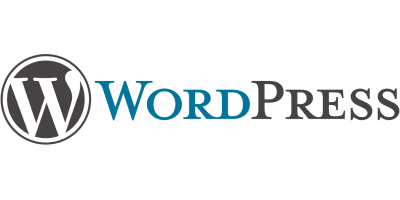The Power of Content Management Software and Strategies for Success
Content management software (CMS) is a type of software application or platform that allows individuals or organizations to create, manage, and publish digital content, typically for websites and online platforms. CMS systems are designed to simplify the process of content creation and publication, enabling users to update and maintain their websites or digital properties without extensive technical knowledge.
Benefits of Using Content management software:
Using content management software (CMS) offers numerous benefits for individuals and organizations that need to create, manage, and publish digital content. Here are some of the key advantages:
1.Ease of Content Creation:
CMS platforms often come with user-friendly editors and tools that make it easy for non-technical users to create and format content, including text, images, videos, and more.
2.Efficient Content Management:
Content management systems allow for centralized content management, making it easy to organize, categorize, and search for content. This streamlines content workflows and ensures content is always up to date.
3.Collaboration:
Many CMS software platforms support multiple users with various roles and permissions. This enables collaborative content creation and editing, with version control to track changes and updates.
4.Content Scheduling:
CMS systems often include scheduling features, allowing you to plan and automate content publication. This is useful for maintaining a consistent posting schedule and targeting specific times for maximum audience engagement.
5.Content Versioning:
CMS platforms typically maintain a history of content revisions, which can be crucial for auditing, tracking changes, and reverting to previous versions if needed.
6.Responsive Design:
Modern CMS platforms are designed with responsive web design in mind, ensuring that your content looks and functions well on various devices, from desktop computers to smartphones.
7.SEO-Friendly:
Many Content Management System platforms offer built-in SEO tools or plugins that help optimize content for search engines. This can improve your website’s visibility and rankings in search results.
8.Customization:
Content Management systems often allow for customization through themes, templates, and plugins. This means you can adapt your website’s design and functionality to meet your specific needs.
9.Scalability:
Content Management system platforms are typically scalable, meaning they can accommodate growing content and user needs. You can add more content, users, and features as your website or organization expands.
10.Security:
Reputable CMS platforms prioritize security and regularly release updates to address vulnerabilities. This helps protect your website and content from cyber threats.
11.Cost-Efficiency:
Many CMS platforms offer both open-source and paid options. Open-source CMS platforms are often free to use, making them cost-effective for small businesses and individuals.
12.Analytics and Reporting:
CMS systems often integrate with analytics tools, allowing you to track user engagement, site traffic, and other key performance metrics. This data can inform your content strategy and website improvements.
13.Content Reusability:
With a CMS, you can easily reuse and repurpose content across different sections of your website, reducing duplication of effort.
14.Content Backup and Recovery:
CMS platforms typically provide backup and restore features, helping you recover content in case of data loss or disasters.
content management software simplifies the process of creating, organizing, and maintaining digital content while offering various features to enhance productivity, collaboration, and user experience. The specific benefits you’ll enjoy can vary depending on the CMS platform you choose and your unique requirements.
5 Popular content management software Platforms:
There are many popular content management software platforms available, each with its own features and strengths.
1.WordPress:

WordPress is one of the most widely used content management software platforms in the world. It’s known for its flexibility, user-friendly interface, and a vast ecosystem of plugins and themes that allow users to customize their websites easily. It’s suitable for both beginners and advanced users.
2.Joomla:

Joomla is another popular open-source CMS that offers a good balance between flexibility and ease of use. It’s known for its robust content management system capabilities and is often used for more complex websites, including corporate sites, e-commerce stores, and community portals.
3.Drupal:

Drupal is a powerful and flexible Content Management System designed for more advanced users and developers. It’s known for its scalability and ability to handle complex and high-traffic websites. Drupal is often chosen for large corporate websites, government sites, and online communities.
4.Magento:

Magento is a specialized Content Management System platform designed for e-commerce websites. It offers a wide range of features for online stores, including inventory management, payment processing, and advanced customization options. It’s a popular choice for businesses looking to create robust online shopping experiences.
5.Shopify:

Shopify is another e-commerce-focused CMS, but it’s a hosted solution, meaning you don’t have to worry about server management or technical details. It’s known for its simplicity and is popular among entrepreneurs and small to medium-sized businesses looking to set up online stores quickly.
Choosing the Right CMS:
Choosing the right Content Management System (CMS) is a crucial decision for building and maintaining your website. The right Content Management Software can make it easier to create, edit, and manage content, as well as maintain the overall functionality and security of your site. Here are some steps and considerations to help you choose the right Content Management System:
1.Define Your Website Goals:
Start by clearly defining the goals and purpose of your website. Consider factors like the type of content you’ll publish, the target audience, and your long-term objectives.
2.Determine Your Technical Requirements:
Assess your technical needs, including whether you need specific features like e-commerce, blogging, membership systems, or custom integrations.
Consider your hosting preferences (self-hosted vs. cloud-based) and server requirements.
3.Budget:
Determine your budget for both initial development and ongoing maintenance.
Keep in mind that some CMS options are open source and free, while others may have licensing fees, hosting costs, or additional expenses.
4.Ease of Use:
Assess the CMS’s user-friendliness, especially if you or your team are not experienced web developers. A user-friendly interface can save time and reduce the learning curve.
5.Scalability:
Consider your website’s future growth. Will the CMS be able to handle increasing traffic, content, and functionality as your site expands?
6.Customization:
Evaluate the level of customization the CMS allows. Can you easily adapt the design and functionality to meet your specific needs?
7.Community and Support:
Check if the CMS has an active and helpful user community. A strong community can provide valuable support, resources, and plugins/extensions.
Ensure there is access to technical support or documentation in case you run into issues.
8.Security:
Security is critical. Research the CMS’s track record for security vulnerabilities and updates. Ensure it follows best practices for website security.
9.SEO-Friendliness:
A good CMS should support SEO best practices, such as customizable URLs, meta tags, and structured data.
10.Mobile Responsiveness:
In today’s mobile-centric world, your website must be mobile-friendly. Ensure the CMS offers responsive templates or themes.
11.Performance:
Page load speed is crucial for user experience and SEO. Look for a Content Management System that can deliver fast-loading pages.
12.Backup and Recovery:
Ensure the CMS has built-in backup and recovery options to protect your data in case of emergencies.
13.Updates and Maintenance:
Regularly updating your Content Management System and plugins is essential for security. Choose a CMS that makes this process manageable.
14.User Reviews and Recommendations:
Read reviews and seek recommendations from peers or industry experts who have experience with the CMS options you’re considering.
15.Trial and Testing:
Whenever possible, try out the CMS through a demo or trial period to see if it meets your requirements and expectations.
Content Management Strategies for Success :
In the digital age, content is king, and managing that content effectively is the key to success for businesses and organizations of all sizes. Content management software isn’t just about creating and publishing content; it’s about ensuring that your content is organized, accessible, and serves its intended purpose. In this blog post, we’ll explore the world of content management and provide strategies for mastering it.
1. Define Your Content Management Goals:
Before you can effectively manage your content, you need to define your goals. What do you hope to achieve with your content? Are you looking to increase website traffic, engage with your audience, or generate leads? Clearly defined goals will guide your content creation and management efforts.
2.Create a Content Calendar:
A content calendar is a crucial tool for content management. It helps you plan, organize, and schedule your content in advance. By having a clear schedule, you can ensure a consistent flow of content that aligns with your goals and audience’s interests.
3. Choose the Right Content Management System (CMS):
Selecting the right CMS is vital for efficient content management. Popular CMS platforms like WordPress, Drupal, and Joomla offer user-friendly interfaces and a wide range of plugins and themes to enhance your content management capabilities. Choose a CMS that suits your specific needs and technical expertise.
4. Develop a Content Hierarchy:
Organize your content by creating a hierarchy. This includes categorizing content into topics, subtopics, and tags. A well-structured hierarchy makes it easier for users to navigate your website and find the information they need.
5. Implement Version Control:
Version control is essential, especially when multiple team members are involved in content creation. Tools like Git and GitHub allow you to track changes, collaborate seamlessly, and ensure the accuracy of your content.
6.Metadata and SEO Optimization:
Incorporate metadata and optimize your content for search engines. This includes using relevant keywords, meta descriptions, and alt text for images. SEO-friendly content ensures your content gets discovered by a wider audience.
7.Regularly Update and Refresh Content:
Content management doesn’t end after publishing. Regularly review and update your content to keep it relevant and accurate. This can improve search engine rankings and provide value to your audience over time.
8. Monitor Analytics:
Utilize analytics tools to track the performance of your content. Measure metrics like page views, click-through rates, and conversion rates to gauge the effectiveness of your content strategy. Adjust your approach based on the data you collect.
9.User Experience (UX) Matters:
Consider the user experience when managing content. Ensure that your website is responsive, loads quickly, and provides an intuitive navigation experience. A positive UX keeps visitors engaged and coming back for more.
10. Train Your Team:
If you have a team responsible for content management, provide training and guidelines. Ensure everyone understands your content strategy, brand voice, and best practices for creating and managing content.
In conclusion, mastering content management is essential for online success. By setting clear goals, using the right tools, and following best practices, you can create and manage content that resonates with your audience and achieves your business objectives. Remember that content management is an ongoing process that requires dedication and continuous improvement. Keep evolving your strategies to stay ahead in the ever-changing digital landscape.
